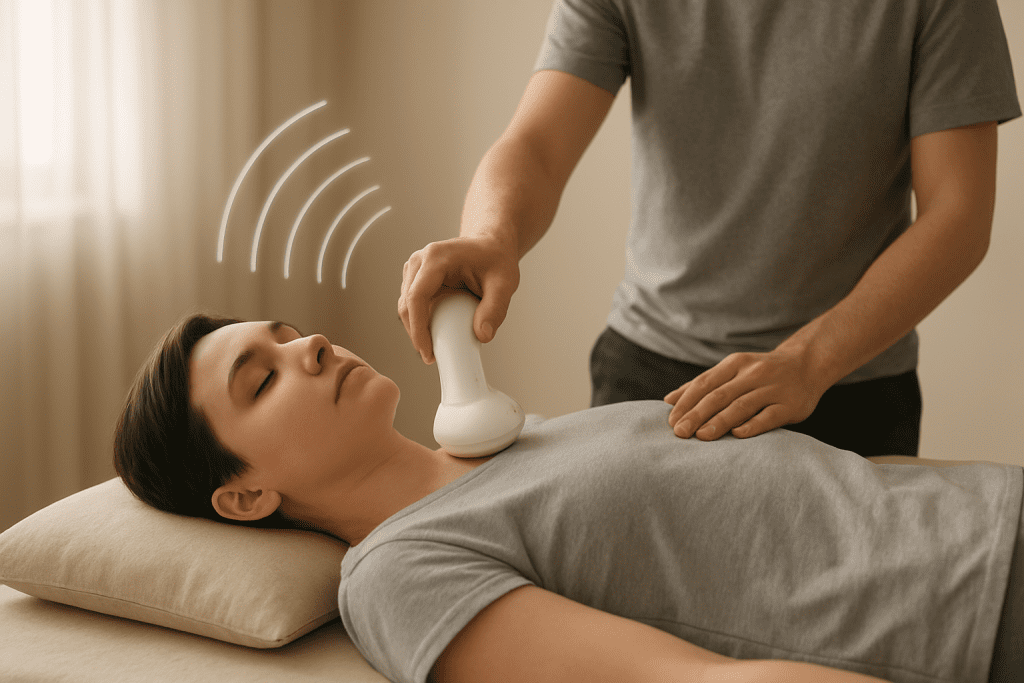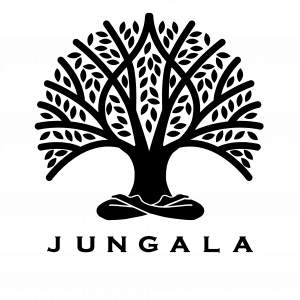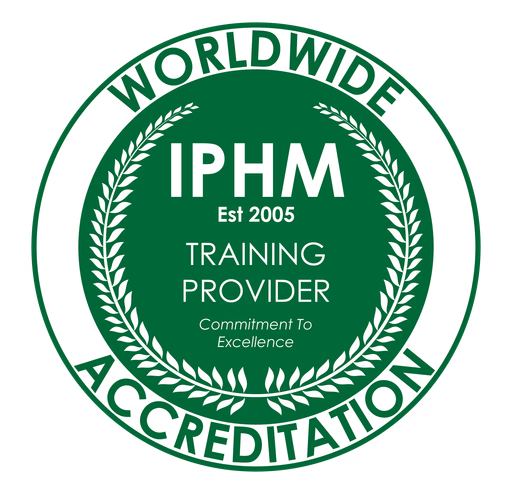
What You’ll Learn
You’ll get a clear, evidence-informed answer to whether sound and vibration techniques can speed up recovery, reduce soreness, and help you feel and perform better. We’ll keep it practical what to use, when to use it, and how to combine methods without wasting time.
The quick answer
Yes—massage and vibration-based techniques can meaningfully reduce post-exercise soreness (DOMS) and perceived fatigue. The strongest evidence exists for traditional massage, with growing support for vibration and percussive devices. Sound-based vibroacoustic approaches show promise for pain, stress, and sleep regulation, though research is less mature.
Recent scientific studies by Aminian Far et al. further support the positive effects of vibration therapy on muscle performance, blood flow, and pain management.
Who benefits most
- Lifters and field/court athletes navigating hard training blocks
- People with high stress loads or sleep issues
- Desk-bound humans with nagging tightness and “computer posture”
- Time-crunched folks who need short, reliable routines
The Basics What Are We Talking About?
Vibration massage (percussive devices, platforms)
- Percussive massage guns deliver rapid pulses (vibration + pressure) to soft tissues. Users like them for quick post-workout relief and improved range of motion. Evidence suggests short-term improvements in soreness and flexibility; protocols still vary. Localised vibration is particularly effective for targeting specific, stiff, or painful muscles that are difficult to treat with general methods.
- Whole-body vibration (WBV) platforms transmit mechanical vibration through the body while you stand or perform simple movements. Some data shows reduced DOMS and better neuromuscular function post-exercise.
The vibration technique can be applied in various ways to stimulate muscles, increase blood circulation, and improve recovery.
Sound-based work (vibroacoustic therapy, sound massage)
Vibroacoustic therapy (VAT) uses low-frequency sound, specifically sound waves that generate therapeutic vibrations in the body, delivered through transducers in a chair/bed to create gentle body vibrations. Early trials and scoping reviews suggest benefits for pain, stress, and cognition but this space needs more high-quality RCTs.
Classic sports massage vs. gadgets
Traditional manual massage remains the best-supported for reducing soreness and perceived fatigue after exercise. Gadgets can complement, especially when a therapist isn’t available.
Some studies have explored high-tech or robotic massaging methods, but their clinical relevance compared to traditional massage remains uncertain
How Recovery Actually Works
From micro-damage to rebuilding
Hard sessions create micro-tears, inflammation, and nervous system fatigue. Recovery is the phase where you repair tissue, restore nervous system balance, and adapt to come back stronger.
Improved circulation during recovery can also promote the production of new blood cells, which supports tissue healing and regeneration.
Nervous system downshift (rest-and-digest)
Many recovery tools work by nudging the autonomic nervous system toward parasympathetic dominance (calm mode). Massage and soothing low-frequency sound can help dampen stress responses, which often improves sleep and pain perception.
Additionally, vibration and sound therapies may exert neurological effects that promote relaxation and recovery.
Blood flow, lymph, and fascia glide
Mechanical stimulation (manual or vibration) can increase local blood flow, reduce stiffness, and improve the glide between layers of fascia and muscle often translating to less soreness and better movement quality at the next session.
Additionally, vibration massage can enhance venous return, which helps reduce muscle fatigue and supports overall tissue health.
What the Research Says (Evidence Snapshot)
Massage for DOMS and fatigue
Systematic reviews and meta-analyses show massage reduces DOMS and perceived fatigue following intense training. Effect sizes are modest but meaningful in practice, especially during dense competition schedules.
Massage is also effective for addressing trigger points, which are key contributors to muscle pain, altered movement, and musculoskeletal dysfunction.
Massage may not transform performance metrics directly, yet even small gains in comfort and readiness can matter when recovery windows are short.
Vibration for soreness and function
Meta-analyses report that vibration (local or whole-body) reduces soreness and can improve pain thresholds after DOMS-inducing exercise. The impact on range of motion is mixed and protocol-dependent.
The effects of vibration extend beyond soreness reduction to include improved muscle function and recovery.
Percussive massage guns what’s legit
Narrative syntheses and a recent RCT suggest percussive massage can acutely improve flexibility, reduce soreness, and, when scheduled post-exercise, outperform passive approaches like static stretching for DOMS relief in active populations. More standardized dosing research is needed.
Professional athletes frequently use percussive massage guns to support recovery and enhance performance.
Vibroacoustic therapy for pain, stress, and sleep
Evidence (scoping and pilot studies) indicates VAT, a type of vibrational therapy that uses sound-induced vibrations, can lower pain and stress markers and enhance relaxation, with potential cognitive benefits. However, the literature still calls for more robust randomized trials before firm clinical recommendations.
What’s still unclear
- Optimal dosage (amplitude, frequency, duration) for different goals
- How results differ across training age, sex, and sport
- Long-term effects vs. acute benefits
Vibration Massage for Chronic Pain
Vibration massage has emerged as a valuable tool for those dealing with chronic pain. By delivering gentle vibrations directly to affected areas, this massage technique helps relax tight muscle fibres and encourages better blood flow through soft tissues. Improved blood circulation means more oxygen and nutrients reach the muscles, while waste products are carried away more efficiently key factors in reducing persistent muscle pain.
For individuals living with conditions like fibromyalgia, arthritis, or ongoing lower back pain, vibration therapy offers a non-invasive way to manage discomfort and support daily function. The rhythmic up and down movement of vibrating massagers can help soothe muscle cramps, ease muscle knots, and promote relaxation throughout the body.
Many massage therapists now combine vibration massage with other forms of massage therapy, such as percussion massage, to maximize pain relief and enhance the overall benefits of treatment. This integrated approach can help break the cycle of chronic pain, making it easier to move, exercise, and enjoy daily activities with less discomfort.
Whether used on its own or alongside other therapies, vibration massage is a promising option for anyone seeking to manage chronic pain, improve blood flow, and support long-term healing.
Real-World Use Cases
After strength training
Got squats or deadlifts? Short bouts of percussive work on quads (the thigh muscles are a primary focus for post-strength training recovery), glutes, and calves can make the next-day stairs less dramatic. Pair with a light cycling flush and protein-rich meal.
Endurance and team sports
Post-match or long-run, athletes can cycle 5–10 minutes of vibration/percussion on hotspots (calves, hamstrings, hip rotators) to curb stiffness before the next session.
Sports phys ther professionals frequently incorporate vibration and percussion therapies to support athlete recovery.
Desk-bound tightness and general wellness
If you sit all day, 6–12 minutes of gentle percussive work on pecs, hip flexors, and upper traps, plus a slow-breathing track or vibroacoustic session, can reset posture and mood.
Vibration massage can also help relieve tight muscles that develop from extended periods of sitting.
Protocols You Can Try (Step by Step)
Always begin gently. If you have a medical condition or you’re pregnant, consult a qualified professional first.
Protocols may also vary in the frequencies used, which can influence the specific effects on recovery and relaxation.
10-minute post-workout recovery
- 2 min light cycling or brisk walk
- 6 min percussive massage: 30–60 seconds per muscle group (quads, hamstrings, calves, glutes, pecs, lats), low-to-medium intensity, keep the head off bony landmarks
- 2 min nasal breathing (4-second inhale, 6–8-second exhale)
Why it helps: blends circulatory flush, local pain modulation, and nervous system downshift. Percussive massage relaxes muscles and reduces post-exercise tightness by loosening muscle fibers. Evidence supports both massage and vibration for DOMS reduction.
5-minute pre-workout priming
- 30–45 sec per target muscle with a massage gun at low amplitude/high speed as a pre event routine to prepare muscles for activity
- Follow with dynamic mobility (e.g., leg swings, hip circles)
You’re aiming for reduced stiffness without sedation. Keep it short and snappy.
12-minute “desk reset”
- 6 min gentle percussion to pecs/upper traps/hip flexors
- 3 min thoracic mobility (open books, wall slides)
- 3 min slow breathing or a calming sound track (rain/low-frequency hum) Intent: posture relief, muscle tension relief, and vagal tone support. VAT and calming audio have early evidence for stress reduction.
Sound session for stress and sleep (10–20 minutes)
- Lie on a firm surface or sound chair/bed if available
- Use low-frequency ambient tracks or VAT device
- Breathe slowly (4–6 breaths/min)
This is not “training”—it’s a switch from sympathetic to parasympathetic mode, which indirectly supports recovery. The benefits of vibration also extend to improved relaxation and sleep quality.
How to Choose the Right Tool
Massage gun vs. foam roller vs. WBV platforms
- Massage gun: Fast, targeted, portable. Great for hotspots and short sessions. RCT-level support is emerging for DOMS recovery.
- Foam roller: Cheap and effective for many; slightly more effort and less precise.
- WBV platform: Useful for global effects and warm-ups; evidence suggests DOMS reduction, but access and cost can be hurdles.
Specialized devices such as stone mh are sometimes used by clinicians for targeted vibration therapy.
Sound beds, speakers, bowls what matters
- VAT chairs/beds: Best for full-body vibration from sound; promising for pain and stress but research is still growing. Recent studies published in Br J Sports Med support the use of vibration and sound therapies for recovery.
- Headphones + low-frequency tracks: Accessible path to relaxation; consider pairing with breathwork.
Safety, Risks, and When to Avoid
Contraindications
Avoid intense vibration/percussion over:
- Fresh injuries, open wounds, or acute inflammation
- Bony prominences, the neck/carotid area, and abdomen during pregnancy
- Implanted devices, severe osteoporosis, active DVT, uncontrolled cardiovascular issues
While massage therapy may help reduce blood pressure, individuals with uncontrolled cardiovascular issues or concerns about blood pressure should seek medical advice before use. When in doubt, get medical clearance.
Red flags to stop immediately
- Numbness, tingling, sharp or escalating pain
- Dizziness, nausea, or unusual swelling
- Any symptom that persists beyond a few hours post-session
Optimizing Recovery Beyond Massage
Sleep, protein, hydration, load management
No tool replaces the big rocks: 7–9 hours of sleep, adequate protein (≈1.6–2.2 g/kg/day for lifters), hydration, and smart programming. Massage and sound are add-ons, not magic bullets.
Stacking with breathwork, mobility, cold/heat
- Breathwork amplifies the nervous system downshift (box breathing, 4-7-8).
- Mobility keeps the gains you create with soft-tissue work; combining mobility work with vibration therapy can help improve circulation and support recovery.
- Cold/heat can be layered based on tolerance and timing.
Who should use what and when
- You lift heavy or often: Use short percussive sessions post-workout and targeted WBV if available. Expect less soreness and better readiness.
- You’re stressed or sleep-challenged: Try vibroacoustic or calming sound sessions in the evening to support downregulation and subjective recovery.
- You want a single, proven lever: If access allows, manual massage remains the recovery MVP for easing DOMS and perceived fatigue.
Sports med professionals frequently recommend vibration and sound therapies as part of comprehensive recovery programs.
This article is for general information and is not a substitute for professional medical advice. If you have a health condition, talk to your clinician before trying new modalities
FAQs
Not exactly. Manual massage has the strongest evidence base for reducing soreness and perceived fatigue. Massage guns are convenient and can help but they don’t fully replicate skilled hands.
Shorter can be better. Meta-analytic data suggests 5–12 minutes of massage may outperform longer bouts for recovery metrics apply that spirit to percussion too.
Yes, studies indicate vibration can reduce pain at 24–72 hours post-exercise and improve pain thresholds. Vibration therapy is also effective for reducing muscle soreness after intense exercise, helping to alleviate delayed onset muscle soreness (DOMS) and aid recovery.
Early evidence shows vibroacoustic sessions can reduce stress and pain and improve relaxation and some cognitive measures. It’s promising, but we need more robust trials.
After training: 6–8 minutes of percussive work on the muscles you used most, followed by 2 minutes of slow breathing. Regular vibration massage can also stimulate the growth of more capillaries, which helps deliver oxygen and nutrients to muscles and supports overall muscle health. Before bed: 10–15 minutes of calming low-frequency audio or VAT if available.




